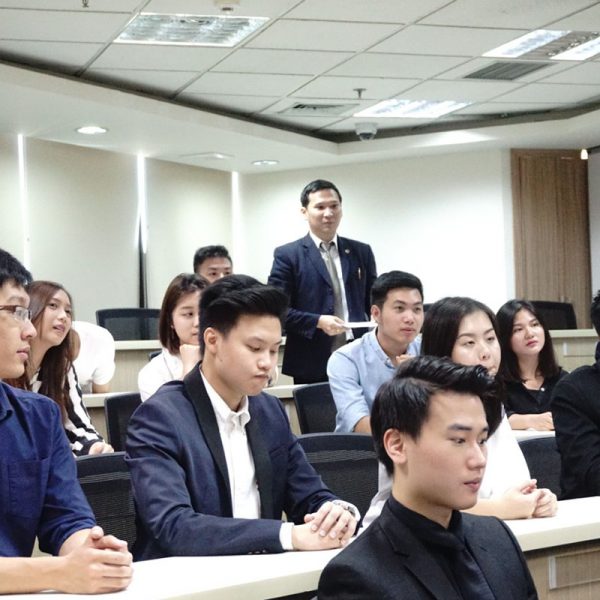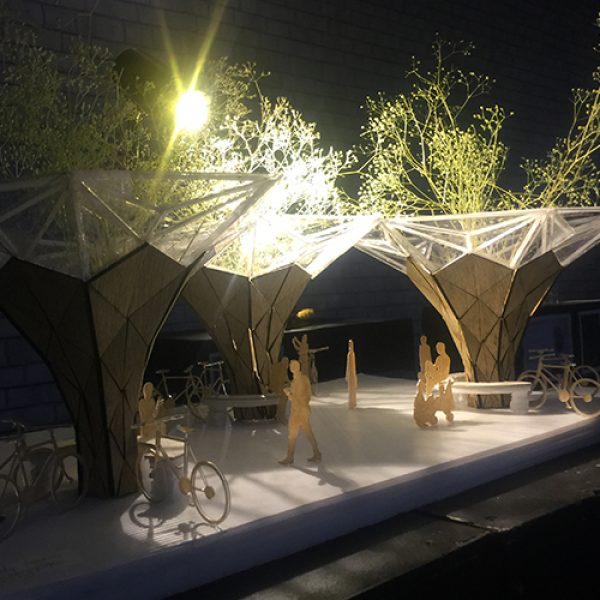2019
UPH Visual Communication Design and WGD Introduces the Works of Peter Bankov in the Poster Exhibition 2018.

Universitas Pelita Harapan (UPH) Visual Communication Design, along with Worldwide Graphic Designers (WGD), held the Poster Exhibition 2018, featuring the works of Peter Bankov, the well-known Russian poster designer. Bankov is known for his experimental and daring approaches in his works.
This exhibition was held on November 5-16, 2018, in the School of Design Multifunction Room at UPH Lippo Village, Karawaci. Before the exhibition, UPH Visual Communication Design students had the chance to attend a workshop by Peter Bankov, conducted through an offline video, on October 15, 2018. In the workshop, each participant made a poster addressing the issue of pollution in the environment. 20 selected works are then exhibited along with 40 of Bankov’s works.
The Poster Exhibition is part of the International Design #1 UPH event series, which features exhibitions, workshops, and a seminar series. This event was attended by Irwan Harnoko, the Head of UPH School of Design (SoD), as well as Visual Communication Design lecturers and students.
This event series is hoped to introduce students to international-class design works – specifically to familiarize them with international-standard posters and its variations.
“We want the students to see Bankov’s works as references – to know what is demanded by the international design scene, so that they can produce design works that can compete with other international-standard works,” Eston Kamelang Mauleti, S.Sn., M.Ds., an UPH Visual Communication Design lecturer and a Steering Committee in the exhibition, explained of the event.
Eston explained how modern-day posters tend to follow trends set by Western European countries or the United States. People overlook works from Eastern Europe, one of them being the likes of Bankov, while in reality these works are obviously of high quality. “This is why UPH Visual Communication Design is thrilled to have Peter Bankov, who is also a WGD member, to hold one of his exhibitions here,” Eston added.
WGD is a community of graphic designers producing posters addressing social issues. Its members come from all across the world to collaborate in works encouraging social awareness, sensitivity, and reflection.
Social reflection is clearly represented in the Poster Exhibition, with the theme of environmental pollution present in every work on display.
“We hope that the works in this exhibition can help people living urbanized lives to slow down and look around at our deteriorating earth. We hope that through these works, visitors can prioritize the needs of the community as a whole – the well-being of the environment that we too often neglect thanks to the demands of modern living,” Alfiansyah Zulkarnain, S.Sn., M.Ds., Department Chair of UPH Visual Communication Design, expressed.
As part of UPH Visual Communication Design’s encouragement for its students to keep creating, student-made posters from the preliminary workshop were scored and the top five works were announced in the Exhibition opening. Out of the five works, one stands out – a piece by Yehezkiel Penalosa, a Graphic Design student from the 2017 batch, with the title “Pollution and Me”.
“I would like to give thanks to God and my lecturers in UPH Visual Communication Design for teaching me to think critically and creatively. The visual style in this poster owes itself to artists and designers in the likes of Makoto Saito, Kazimir Severinovich Malevich, and El Lissitzky. My dream is to make pieces that change the lives of people,” Yehezkiel said.
Irwan Harnoko saw that UPH Visual Communication students are not afraid to go out of the box in their works. They need, however, support as well as a space to create, and this, to an extent, is the responsibility of the faculty and department.
“I am really happy to see how UPH Visual Communication students are taught to stray away from set rules in design. This is impressive because normally, design courses are heavily structured. In UPH, students
“Most design courses are heavily structured and stick to traditional rules. I find UPH’s approach impressive because here, students are shown the way out of those rules and encouraged to think out of the box, and it shows through the works they exhibit,” Irwan admitted. (it)



